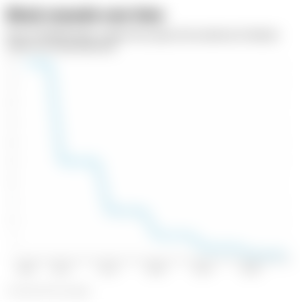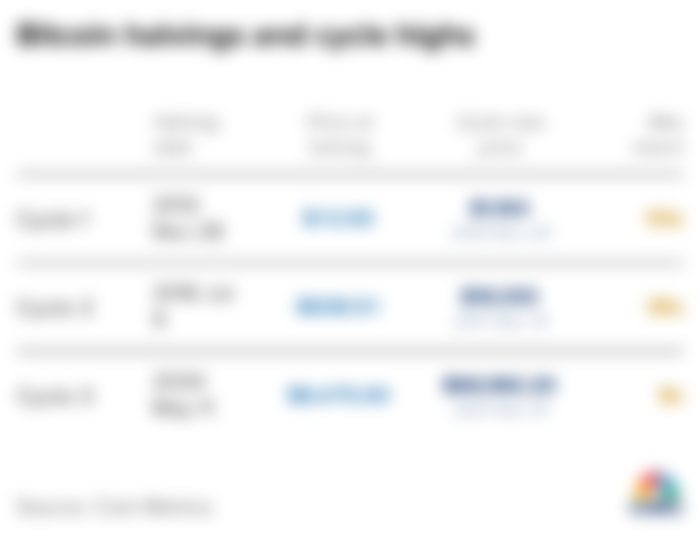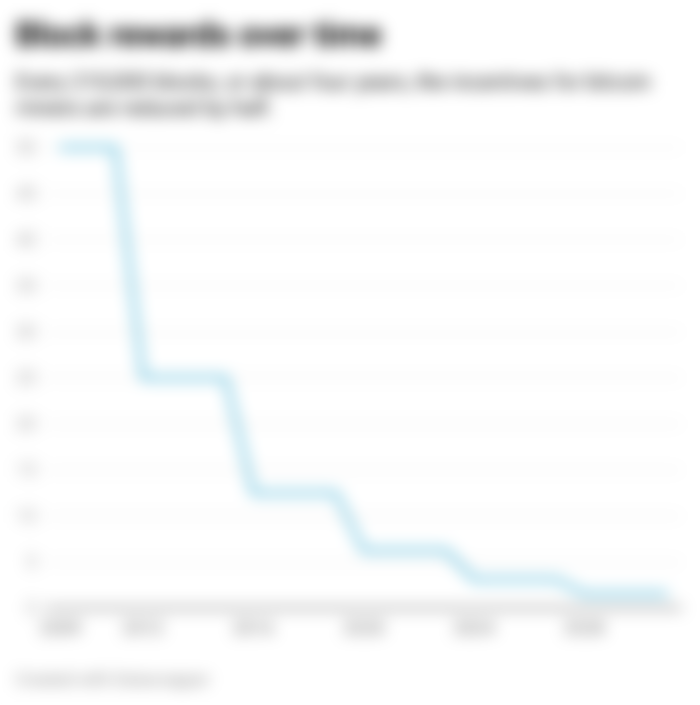Bitcoin just completed its fourth-ever 'halving,' here’s what investors need to watch now
Hello family
Hope you all are good
April 23,2024.
Let's start,
For the fourth time in its history, the Bitcoin network cut the incentives given to miners in half on Friday night.
The purpose of the well recognised occasion, which is required by the Bitcoin code to occur roughly every four years, is to reduce the rate at which new bitcoins are issued. This creates a sense of scarcity and helps the cryptocurrency retain its status as a digital gold alternative.
On the day of the event, there can be some speculative trading. Following the halving of bitcoin, JPMorgan stated that it anticipates some downside, while Deutsche Bank stated that it "does not expect prices to increase significantly." Nevertheless, even if bitcoin maintains its trend of declining returns from its day of halving to its cycle peak, the impact might be worse in the coming months.The hash rate and block reward will be important variables to keep an eye on.

"While the upcoming Bitcoin halving will create a supply shock as the previous ones had, we believe its impact on the cryptocurrency's price could be magnified by the concurrent demand shock created by the emergence of spot bitcoin ETFs," Mark Palmer of Benchmark stated.
The miners themselves will bear a greater immediate impact, he continued. They are the ones in charge of the devices that log new bitcoin transaction blocks and add them to the blockchain, which is the worldwide ledger.
According to Matthew Galinko of Maxim, "miners with access to affordable, dependable power sources are well positioned to navigate the post-halving market dynamics.Friday "A combination of limited access to electricity, effective machinery, and finance may cause certain miners—many of whom are not publicly traded—to leave the market. The halving may lead to consolidation and disruption, which may present possibilities for miners with cash and rather expensive electricity."
The block incentive
Two incentives exist for miners to mine: 3.125 freshly produced bitcoins, or roughly $200,000 as of Friday evening, when the mining reward decreased from 6.25 bitcoins, and transaction fees that senders voluntarily pay (for quicker settlement). The first reward was worth fifty bitcoins.

infographic
Because fewer blocks are awarded, fewer coins are generated, which contributes to the belief that there will be less bitcoin in circulation.preserving the notion that bitcoin is digital gold, the value of which is based on its limited quantity. The Bitcoin code states that there will eventually be a limit of 21 million bitcoins in circulation. Currently, 19.6 million of them are in use.
According to Deutsche Bank analyst Marion Laboure, "miners use powerful, specialised computer hardware to validate transactions on the Bitcoin network and record them permanently on the blockchain." Miners receive newly created bitcoins as payment for this operation, which is called mining. However, the incentive to mine is reduced with each halving in order to preserve scarcity and manage the pace of inflation of the coin over time."
The rate of hashing
The entire computing power required by miners to execute transactions on the Bitcoin network, or the hash rate, has historically,pricing out of the market a few miners. But, Laboure said, it usually recovers in the medium term.
For months, miners have been striving to gain market share before the halving, which has caused the network hash rate to reach all-time highs. The contribution of individual miners to the network hash rate is reduced as the Bitcoin hash rate grows.
"In the past three halvings, the network recovered its pre-halving hash rate levels within an average of 57 days," she stated. "It is also likely that the current elevated prices of bitcoin may limit this short-term dip in the hash rate, as bitcoin miners enjoy record high profits in the lead-up to the halving."
Palmer stated that the halving's effect on the profitability of bitcoin miners might be "more than offset."
The End.
Thanks for Reading.

